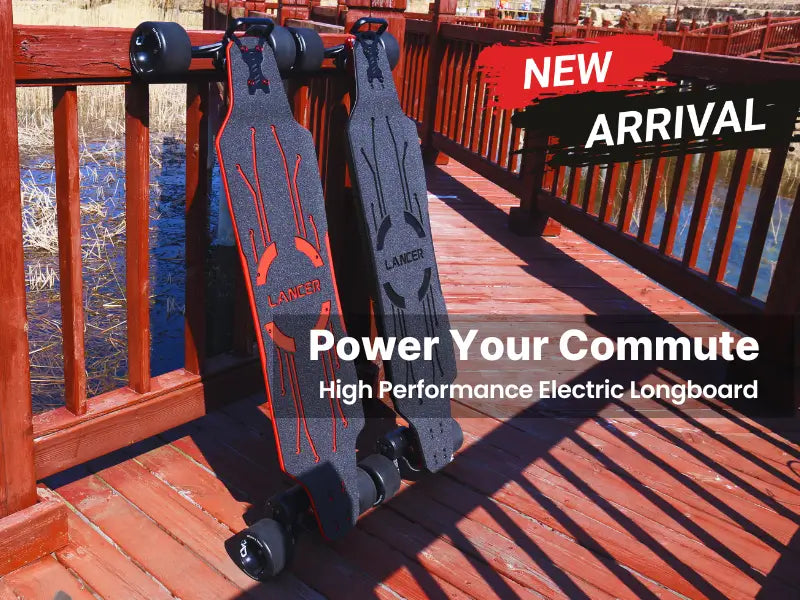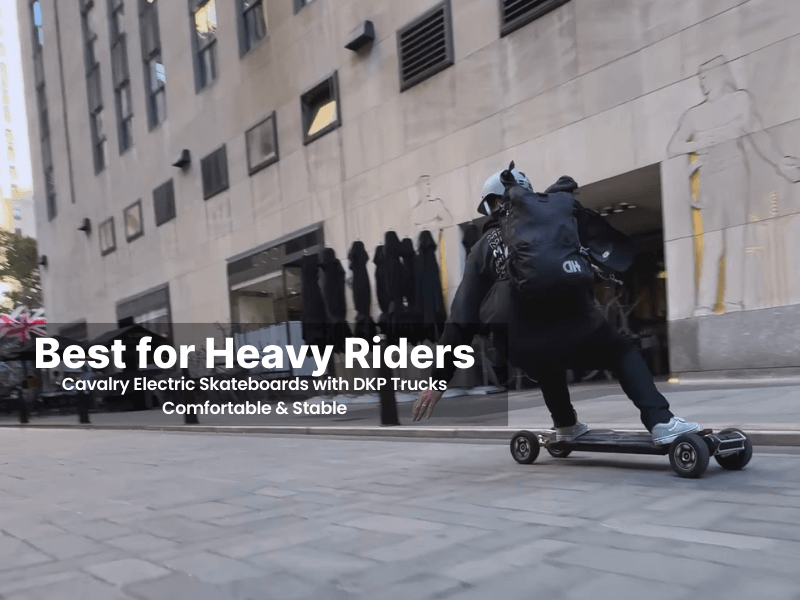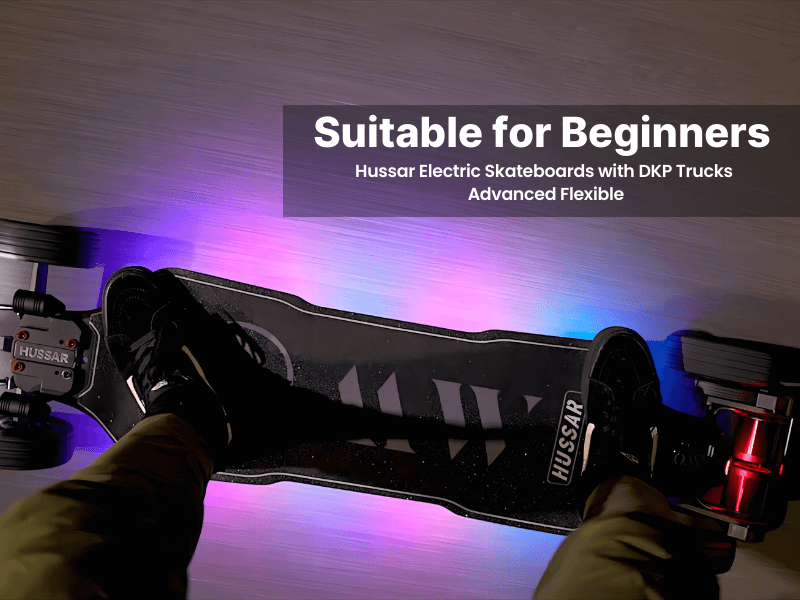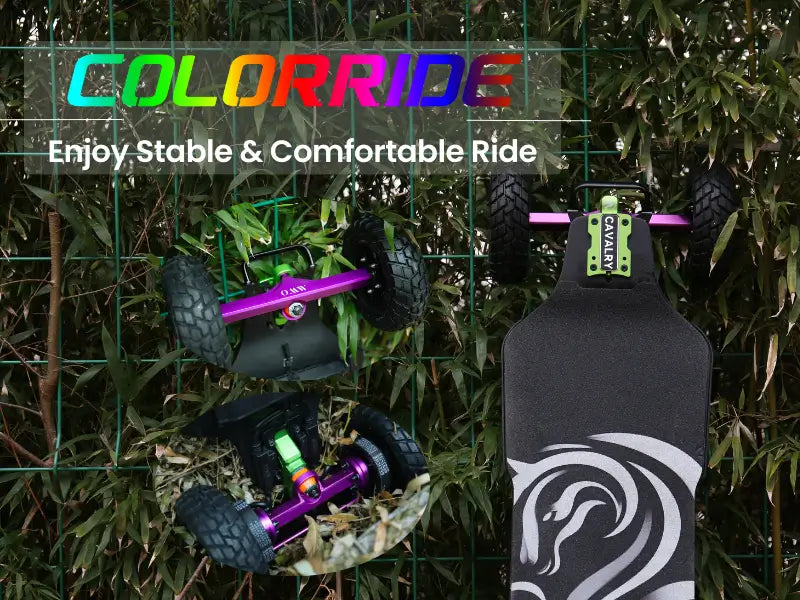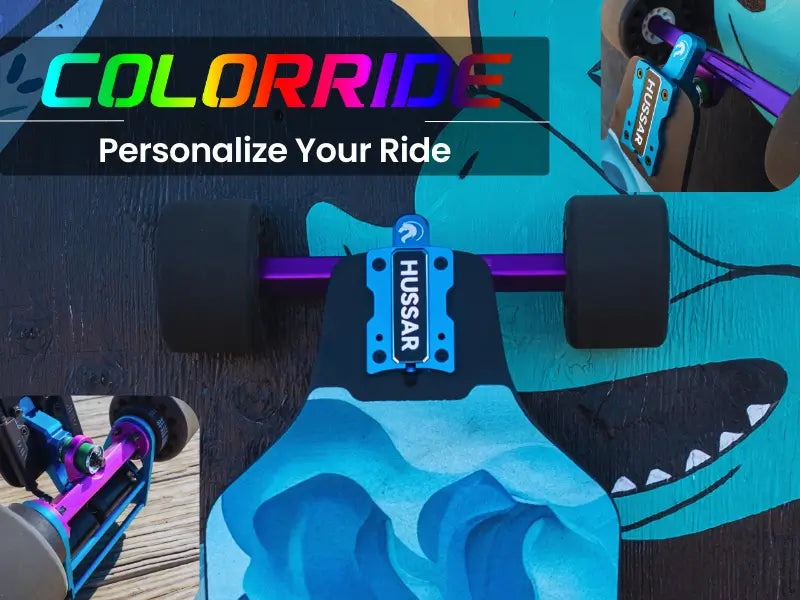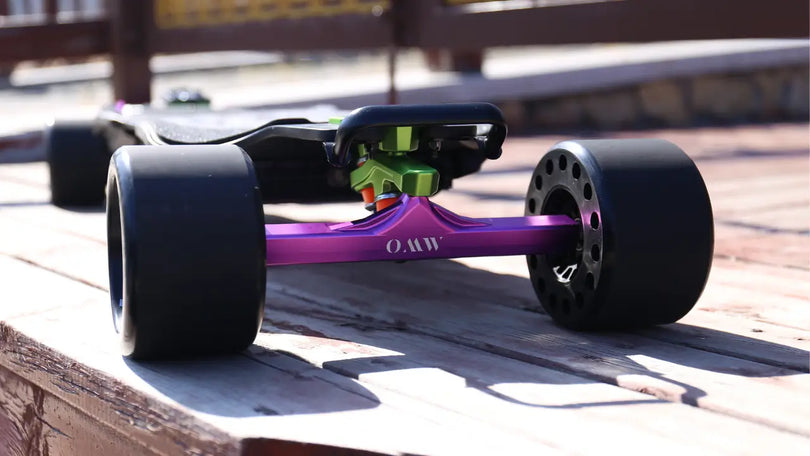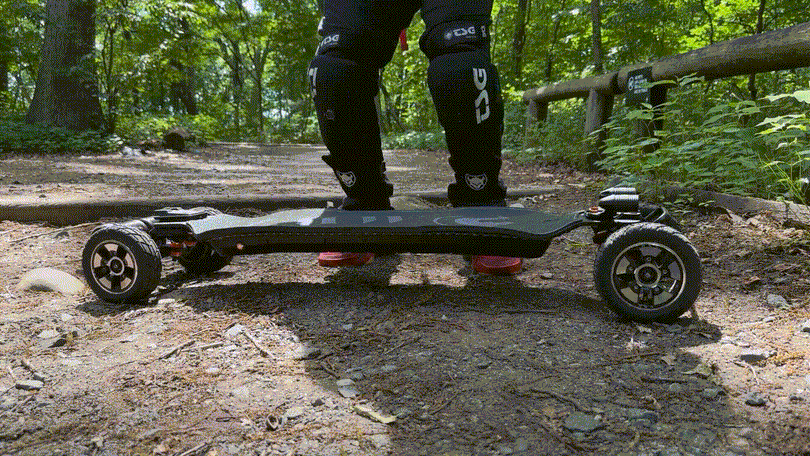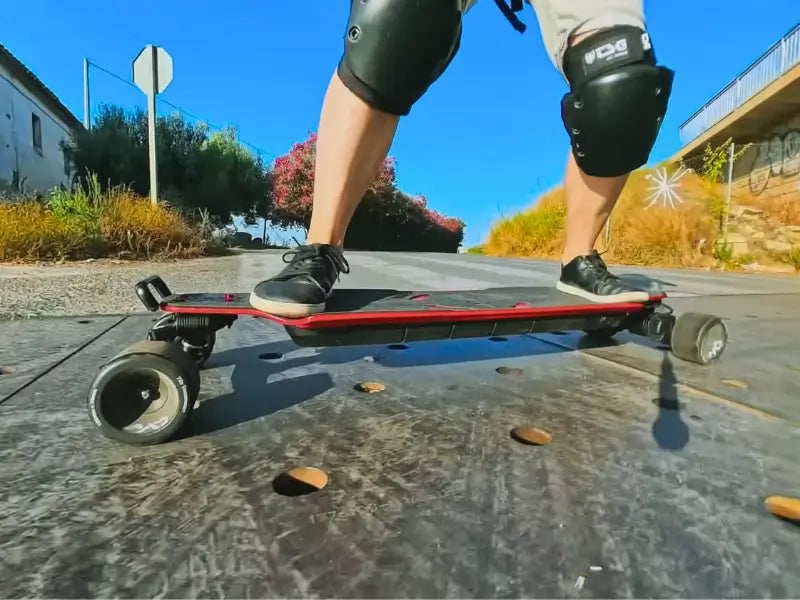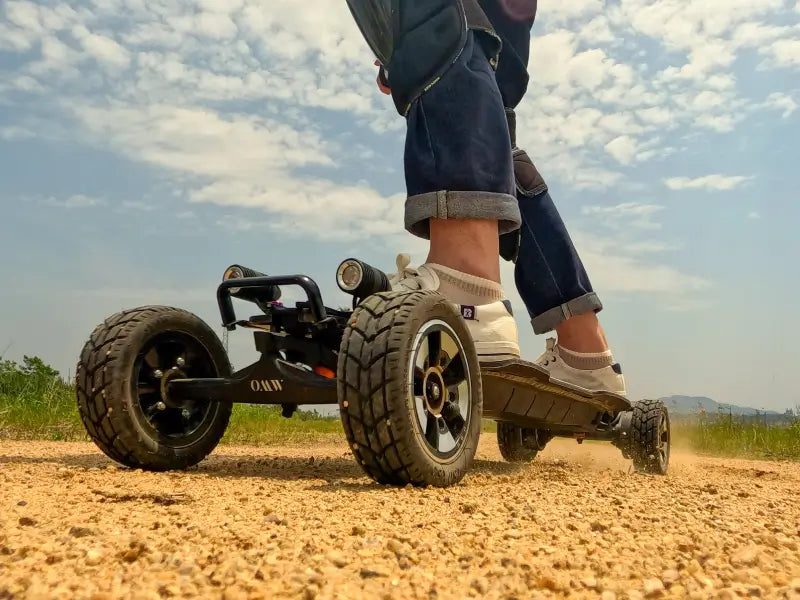Getting your bushings dialed is just as important as selecting the right motor, deck, or wheels. Bushings are the hidden key of your electric skateboard, profoundly influencing its steering, stability, and overall ride comfort. For DIY enthusiasts, selecting the right bushings is crucial for transforming your ride from clunky to fluid, offering unparalleled customization. This guide will help you pick the perfect bushings to match your weight, riding style, and truck setup.
Understanding Bushings: The Core of Your Suspension
Each Eskate truck typically has two polyurethane bushings that fit around your truck's kingpin above and below the hanger: the boardside bushing (closest to the deck) for primary stability and weight support, and the roadside bushing (closest to the ground) for fine-tuning turn response and rebound. Together with the kingpin, they form your Eskate's turning system, compressing to allow smooth tilting and absorbing road vibrations for a more comfortable ride.

Durometer: Finding Your Bushing Sweet Spot
Bushing hardness is measured on a durometer scale (typically 'A', with higher numbers indicating harder bushings).
- Soft Bushings (78A - 88A): Offer more cushion and easier turning, ideal for lighter riders, cruising, and tight turns. May feel unstable at high speeds or for heavier riders.
- Medium Bushings (85A - 95A): Provide a good balance of maneuverability and stability, suitable for versatile riding styles.
- Hard Bushings (95A+): Deliver maximum stability and precise control, especially at high speeds, favored by heavier riders or downhill enthusiasts.
Your rider weight, speed, and terrain are interconnected factors. Heavier riders generally need harder bushings, while lighter riders prefer softer ones for better response. Faster speeds demand harder bushings for stability, while rougher terrain might benefit from slightly softer bushings for vibration absorption.
Shaping Your Ride: Exploring Bushing Forms
Bushing shapes offer distinct turning characteristics and stability levels:
- Cone: Tapered, offering minimal resistance and maximum lean for a fluid, surf-like feel.
- Barrel: Cylindrical, providing more stability than cones, versatile for balanced setups.
- Tall Fat Cone: Offers progressively increasing resistance with deeper lean, great for preventing wheel bite or a progressive feel.
- Stepped: Restrictive shape providing high resistance, allowing riders to use softer durometers for increased support.

Strategically combining shapes and durometers is common. Mixing shapes lets you fine-tune your lean and response. Cone-top + barrel-bottom is standard; double-cone gives sharper turns, while double-barrel enhances downhill control.
Truck Compatibility: TKP, RKP, and DKP
Different truck types interact with bushings in distinct ways, directly affecting your electric skateboard’s steering, stability, and ride feel. Understanding these differences helps you fine-tune your setup for maximum performance and safety.
- Traditional Kingpin (TKP): Common on street and cruiser boards, offering a "divey" responsive turn, is ideal for technical street riding or tight maneuvering. OMW's CNC TKP trucks use industry-standard bushing sizes, allowing for wide customization options.
- Reverse Kingpin (RKP): Used on longboards for cruising, carving, and downhill. More stable at high speeds and more linear turning response, but tuning is highly sensitive to bushing type and durometer. It is ideal for riders who want balanced performance with predictable control at medium to high speeds
- Double Kingpin (DKP): Designed for deep carving and a "surf-like" feel, but can be less stable at very high speeds. Installing harder bushings (especially in the rear) helps reduce wobble and regain stability. For example, OMW’s CNC DKP trucks come pre-equipped with 55D+ bushings, delivering a more controlled, confidence-inspiring ride even at high speeds

Tips: Regardless of truck type, using the correct bushing height and shape is crucial. Always double-check compatibility when switching bushings or truck types. If unsure, refer to the manufacturer specifications or consult experienced riders or tech support.
Installation & Adjustment: Dialing in Your Setup
Installing new bushings involves removing the old ones, checking washers and pivot cups, then sliding on the new boardside bushing and washer, followed by the hanger, roadside bushing, and smaller washer, before re-threading the kingpin nut.
Mastering kingpin nut tightness is key. Tightening increases stiffness and stability, reducing wheel bite, while loosening enhances flexibility. Never overtighten to the point of bulging or cracking, as this damages bushings and restricts truck movement. New bushings require a "break-in period" (2-3 hours of riding) to settle into their true performance.
Troubleshooting Common Bushing Issues
Understanding how bushings behave under different conditions can help you resolve ride-quality problems quickly and safely. Here are some of the most common issues — and how to fix them:
-
Speed Wobbles: Often caused by bushings too soft for rider weight/speed, or loose trucks.
- Solution: Install harder bushings, slightly tighten trucks, or shift body weight forward.
-
Wheel Bite: When the deck touches wheels during deep turns, causing sudden stops.
- Solution: Harder bushings, riser pads, smaller wheels, or decks with wheel wells/flares.
-
Squeaky Bushings: Usually due to dry bushings or grit in the pivot cup.
- Solution: Clean and apply a small amount of lubricant to contact surfaces.
-
Worn Bushings: Indicated by a "floppy" or unstable feel, increased wheel bite, or visible cracking/crushing.
- Solution: Replace with new bushings, ideally from the same brand as your trucks for optimal fit.
Beyond Bushings: Building a Cohesive Ride System
Tuning your electric skateboard goes far beyond choosing the right bushings—it's about balancing the entire system. Bushings are just one element in a dynamic setup where everything interacts. Here's how:
- Deck Flex
Flexible decks, like the OMW Lancer’s carbon composite deck, naturally absorb road chatter, improving comfort. However, this flex can introduce instability at higher speeds, harder bushings help maintain control.
Stiffer decks offer superior high-speed stability but transmit more road feedback. Softer bushings may help add carve and comfort to rigid setups.
- Wheel Size & Durometer
Larger, softer wheels (e.g., 105mm Mad Wheelz V2 or pneumatic tires) increase grip and absorb impacts. This allows riders to run slightly harder bushings for added responsiveness, without sacrificing comfort.
Conversely, smaller or harder wheels transmit more vibration, often benefiting from softer bushings to offset stiffness.
- Truck Geometry
The shape and specs of your trucks—hanger width, baseplate angle, kingpin orientation (TKP, RKP, DKP)—define the baseline for turning and lean. Bushings fine-tune this behavior, either amplifying carve or adding resistance for stability.
The DIY journey is one of continuous learning and refinement. Experiment with different bushing combinations and adjustments to find the "perfect" setup that matches your unique riding style, terrain, and evolving needs.

Conclusion: Empowering Your Ride
Bushings are small but mighty components that are fundamental to your DIY electric skateboard's performance. By understanding durometer, shapes, truck compatibility, and proper adjustment, you gain precise control over your ride. Remember to experiment and fine-tune your setup, as the "perfect" feel is highly personal and evolves with your experience.
What's your favorite bushing setup? Share your experiences, tips, and preferred combinations in the comments below! Your insights help our community grow.

